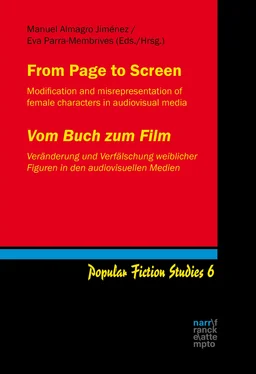In an attempt to face this situation, on numerous occasions the voices of many women have been raised, in an organized way or not, to stand up to what we could call the structural violence that can be observed in the way all kinds of relationships are established, for example between men and women. But appealing only to the purely biological element would prove to be a rather reductionist analysis, since it cannot be denied also that this structural violence is a compound, as said before, of all sorts of other variables, such as race, ethnicity, social class or religious education.
And here we are not referring to the social practices in ancestral and past societies, something that the progress inspired by Western societies has supposedly overcome: we are also talking about the circumstances in the Western societies of today, in which progress suffers from an unfinished agenda. Thus, it is clear that in order to accomplish the promise of freedom implicit in the narrative of progress, women have to start by discovering a voice of their own with which to express not the needs of others but their own needs, a voice that will also make it possible for women to become aware of their own situation. This leads to a process, again here and now, of deconstruction of the given, particularly the masculine world, that is, a revelation of its already cultural character; a world that has been created, constructed, but which is not necessarily definitive and, in that sense, perfectly susceptible to change and even substitution for another model of relationships.
In the first essay of this section Margarita Estévez-Saá deals with one of the most powerful and complex representations of a woman in fiction, Molly Bloom, the female protagonist in Ulysses , by James Joyce. To the initial difficulty of taking a novel like this one to the screen it must be added the controversy concerning the approppriateness and faithfulness of Joyce’s portrayal of the psychology of a woman. Estévez-Saá reviews the opposing views in this respect, and then goes on to provide a detailed analysis of the way in which the character of Molly Bloom has been staged on two occasions, tracing the differences between the two film versions to distinct aspects like, among others, the diverse performances of the female protagonist in both films, or the contrasting target audiences intended by both filmakers or the different moments in the history of Ireland in which the filmings took place.
In her essay Monserrat Bascoy discusses Die verlorene Ehre der Katharina Blum oder: Wie Gewalt entstehen und wohin sie führen kann , a novel by Heinrich Böll which was published in 1974. With this text the author achieved a significant amount of success which soon caught the attention of the German film industry, and, therefore, was brought to the screen shortly afterwards under the direction of Volker Schlöndorff and Margarethe von Trotta. In his work Böll denounces how the notion of “freedom of the press” can be abused, and the social violence that can be generated and supported by such abuse. Bascoy argues that both the original text and the film version can be considered typical of a period in German recent history when cinema and literature began to position themselves politically, an attitude for which both Böll and Schlöndorff ended up as victims of attacks by the press, even though the film has been frequently criticized for not knowing how to transmit the strength and force of the female protagonist.
Claudia Garnica’s essay is an analysis contrasting similarities and differences between Elfriede Jelinek’s novel, The Pianist , and its film version by Michael Haneke. After placing Jelinek’s novel in the context of other novels by the Austrian writer, Garnica goes on to dissect the basic frame of reference in the novel so that the reader of her essay can fully grasp the play of coincidences and dissonances between the novel and the film. Although Haneke does a great job translating faithfully the words on the page into images on the screen, there are moment in which he deviates from that rule of absolute faithfulness. Garnica’s contention is that those deviations are choices that Haneke consciously make, and, in that sense, they are clearly intentional on the part of the filmmaker, and respond to variations through which the director can emphasize certain relevant topics in the text.
The last essay in this section, by Eva Parra-Membrives, deals with the Netflix series The Sinner , which has frequently been critically praised not only for the originality of the plot, but for using the structure of the detective novel to denounce various aspects of an American middle-class life based on falsehood and deception. The series is a version of a novel by Petra Hammesfahr, a German novelist not really interested in the American way of life, but rather, as Parra-Membrives argues, in denouncing the universality of the social repression of female sexuality, a much more subtle type of violence, which leads women to reject sexual desire and thus perpetuate a conventional view of the idea of sin. According to Parra-Membrives, by narrowing the case presented down to a very specific context, and ignoring the nonfulfillment of desire as the ultimate source of violence, the series trivializes the sexual repression that women have always suffered and contributes to silencing the important denouncement in Hammesfahr’s text.
5 (Music is) a World Within Itself
Finally, in this volume, we include three essays that dissect aspects of the presence of women or the feminine from three very different perspectives. We have chosen for this section the title “(Music is) a world within itself”, one which the knowledgeable reader will have easily identified as part of the first verse of a song by Stevie Wonder (“Sir Duke”), for it is true that music is, like other areas of culture, a world within itself, with its own language and its own codes, its frames of reference of all kinds, which provide almost infinite intertextual games, and local and not so local genealogies and traditions.
But at the same time, and this is the question we want to raise here, music is not oblivious to the avatars and influences of ideological tendencies of all kinds affecting all areas of culture and also, naturally, the field of music. This is particularly true when we look at the representation of the female figure in popular music songs, but also in music considered more elitist, such as opera.
Add to this the authorship component, that is, the question of whether we are dealing with a male author or a with female author, which allows us to add another level of analysis, concerning the way in which the female artist presents herself to the public, that is to say, the way in which her image is marketed. Let us not forget that in popular music there is a double product that is put on the market: the music itself, the songs, but also the figure, the image, of the artist. And the synergy that occurs between these two “products” can generate all kinds of variations and a great amount of interpretative possibilities from the field of cultural studies in general, or from a feminist perspective in particular.
Marina Tornero Tarragó’s essay is an attempt to chart the different ways in which the figure of Carmen, originally from the eponymous novel by Prosper Merimée, has become an important symbol of the representation of a certain kind of woman. Of course, as Tornero Tarragó describes, this is a rather tricky issue, beginning with the stereotypical setting which pervades the original work of Merimée, and coming down through the cultural history of the nineteenth- and twentieth-century, and into the latest versions of this character already in the twenty-first century. After a survey of the main types of representations of this female character, Tornero Tarragó focuses on its, until now, latest version, that of Beyoncé’s take on this iconic woman and, as some sort of turn of the screw for the coming together of high and low cultures, her participation in the campaign “The Joy of Pepsi”.
Читать дальше












